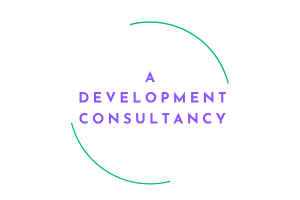Neurodiversity in the workplace
 Neurodiversity in the workplace is becoming increasingly common. The term neurodiversity refers to the way that everyone’s brains naturally work differently from one another. Just as you may be born right-handed, or have green eyes, how your brain works and where you sit on the cognitive spectrum will be unique to you.
Neurodiversity in the workplace is becoming increasingly common. The term neurodiversity refers to the way that everyone’s brains naturally work differently from one another. Just as you may be born right-handed, or have green eyes, how your brain works and where you sit on the cognitive spectrum will be unique to you.
Examples of neurodivergent ways of thinking and behaving include
- Autism
- Attention Deficit Hyperactivity Disorder (ADHD)
- Dyslexia
- Dyspraxia
- Dyscalculia
- Dysgraphia
- Tic disorders such as Tourette’s Syndrome
These conditions often exist on a spectrum and can vary in their effects on different people.
Traditional working practices are often designed with a neurotypical society in mind, which can make it difficult for neurodivergent employees to thrive at work.
As an employer, you can recognise and nurture the unique skills of neurodivergent employees, whilst also supporting them through any individual challenges they may face at work. It’s important to note that the extent to which someone’s neurodivergence affects them can vary. But for some, it may be regarded as a disability under the Equality Act 2010. So, it’s your responsibility as an employer to make any reasonable adjustments to support and enable neurodivergent employees at work.
Supporting neurodivergent employees
Although each person will be different, here are some examples of challenges neurodivergent employees may face at work, and some simple adjustments you can make to support them.
1 Get to know the individual. Try to learn more about their neurodivergence so that you can best support them.
2 Don’t make assumptions. While one person with ADHD might struggle to concentrate, another may not.
3 Provide supportive technology and equipment. For example, some people with dyslexia might struggle with reading and writing. Technology that might help include:
- Speech-to-text, text-to-speech or mind-mapping software
- Dictation tools
- Digital recorder
- Daily planner
- Screen overlay
- Dual screens
4 Communicate clearly. For example, people with autism might not find it easy to read facial expressions or interpret your tone of voice and may take what you say literally. Use direct language and say exactly what you mean.
5 Provide materials in a range of formats. For example, clearly documenting training materials and instructions in audio and visual formats may work better for someone with dyslexia than traditional written materials.
6 Assign tasks appropriately. Try to think about the type of work, tasks and routines that will work best for the individual. For example, if an individual has dyslexia and has trouble with writing or numbers, re-assign tasks like spreadsheets and letter writing to other team members.
7 Consider the physical environment. Bright lighting, noise and interruptions in a busy office may be over-stimulating for some neurodivergent employees. Some adjustments you could make include:
- Adjustable lighting or desk lamps
- Partitions and room dividers, or providing a larger personal working space
- Standing desks
- Including clear instructions next to office equipment
- Using pens, post-it notes, whiteboards, lockers and boxes to help with memory and organisations
- Specific quiet zones in the workplace that are available for all employees to use when they need
8 Be understanding and empathetic. Your staff need to feel they can come and talk to you and ask for help if they need it – but don’t put pressure on them to open up if they won’t want to.
9 Conduct regular 1:1s. Ensure they take place in a confidential space so you can check in, see how they’re doing and whether you need to agree any adjustments to their working practices.
10 Raise awareness and understanding of neurodiversity. Remember it’s up to the individual if they want the team to know of their neurodivergence; they may prefer to keep this private.
11 Nurture good mental wellbeing. Although neurodiversity and mental health are two different things, they can sometimes get mixed up. However, mental health problems such as stress and anxiety are common in neurodivergent people.
Inclusivity in the workplace matters
Forward-thinking organisations are taking steps to include neurodivergent people – a group that likely represents 1 in 7 of the population, and thus in many cases a significant proportion of job applicants, customers, and existing staff.
Neurodiversity is moving up the organisation agenda for two reasons. With the business case for diversity as a whole now accepted, organisations aiming to be truly inclusive employers cannot exclude such a significant demographic as the neurodivergent. To continue doing so risks missing out on talent, and compromising on productivity and customer trust.

More pertinently, the business case for diversity has highlighted the importance of ‘diversity of thought’ – get people with different perspectives, backgrounds and experiences in a room, and your team will be more innovative and creative. In a sense, neurodiversity may be one of the most challenging areas within diversity and inclusion – complex, nuanced, and often invisible – yet it offers a business upside in this context: given that neurodivergent people literally think differently.
If you would like to know more about supporting neurodivergent employees and colleagues in the workplace, please get in touch.




